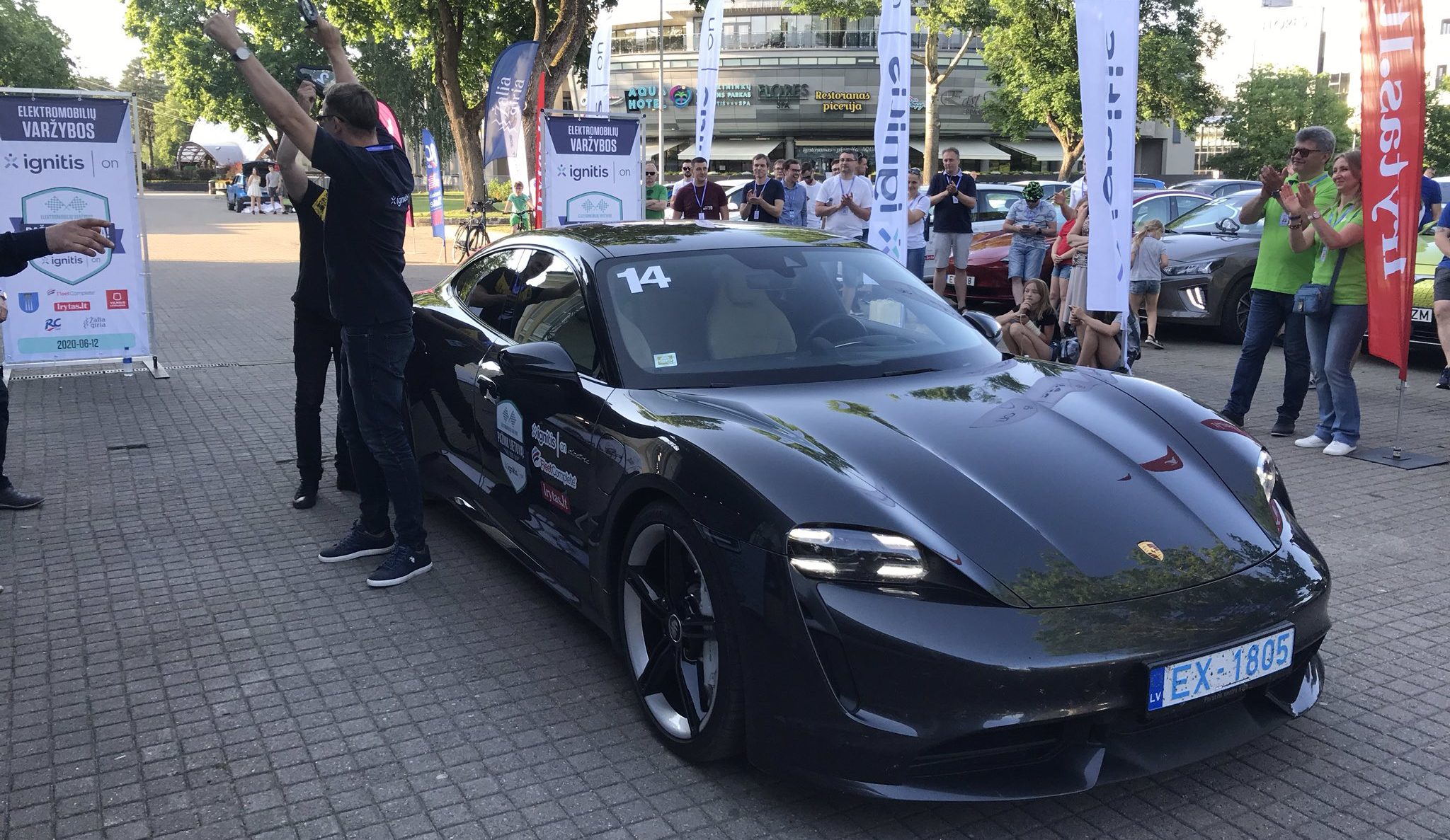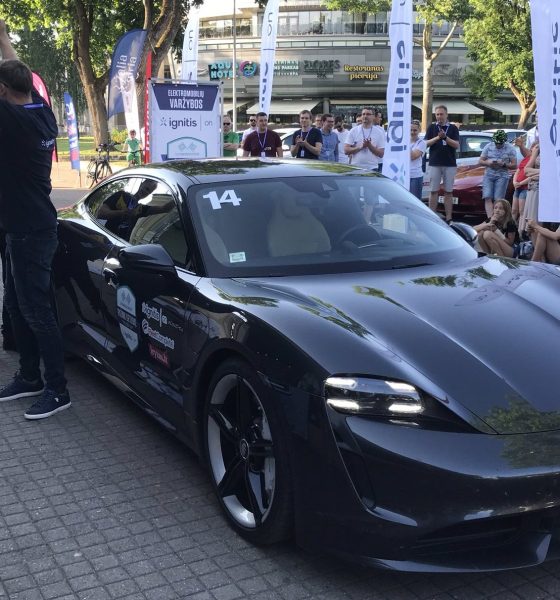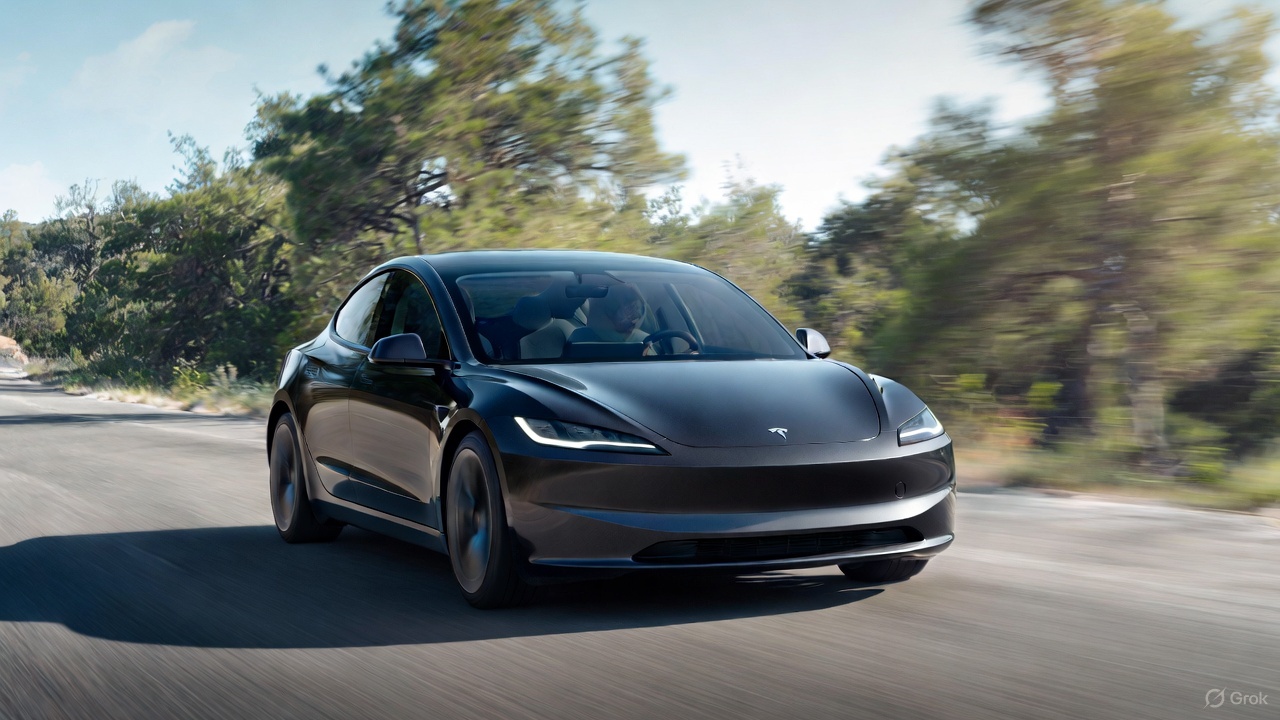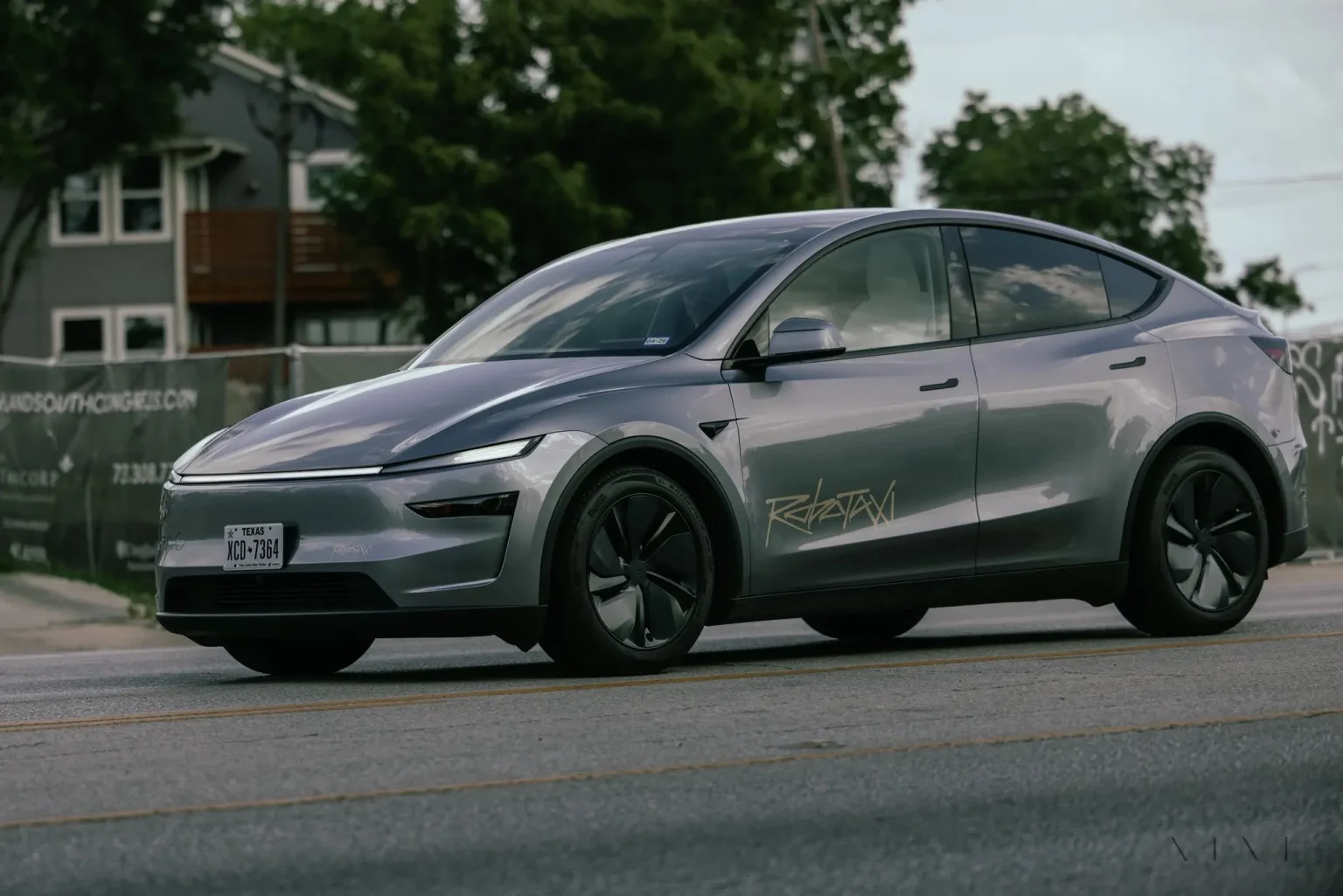

News
Porsche Taycan Turbo bows to humble Tesla Model 3 in 500 km endurance race
During the recently-conducted 500 km electric car race “Ignitis ON: get to know Lithuania!” in Druskininkai, Lithuania, a stunning black Porsche Taycan Turbo proudly crossed the finish line in 5 hours 47 minutes and 14 seconds. That was very impressive for the Taycan Turbo, which made its debut in the race this year. But inasmuch as the 500 km race was a big win for Porsche’s flagship electric car, there was one little detail that tempered its victory.
One minute and seven seconds before the proud Porsche Taycan Turbo completed the race, a humble Tesla Model 3 crossed the finish line, earning first place. The Model 3 was operated by Paliūtis Racing team members Artūras Stelionis and Domas Sabaitis, who covered the 500 km distance in 5 hours 46 minutes and 7 seconds. Interestingly enough, this year also marked Tesla’s debut in the high-profile EV race.
Ultimately, it appears that Tesla’s battery tech and charging capabilities played a key part in the Model 3’s win at the endurance race. The team behind the Model 3 stated that they only stopped to charge their vehicle once during the 500 km race, and their stop only lasted 29 minutes. After that, it was a straight sprint to the finish line.
The team behind the Porsche Taycan Turbo did not indicate how many charging stops they needed to cover the 500 km distance. That being said, it should be noted that the Taycan Turbo has an EPA rated range of 323.5 km (201 miles), which is quite conservative compared to the Tesla Model 3, whose Long Range version provides 518 km (322 miles) of EPA rated range.
The Paliūtis Racing team members did not indicate if they stopped at a Tesla Supercharger, though the length of their single charging stop suggests that the drivers may have stopped at a rapid charger. Had the Model 3 been able to charge at a faster Supercharger V3 station, it could have widened its gap with the Taycan Turbo even further.
In a statement following the event, Stelionis hinted that Tesla’s debut at the endurance race could not have been better.
“We have heard good feedback about this competition a long time ago, but we participated in the event only for the first time. At the same time, it was the debut of Tesla. I really enjoyed the event, we will campaign for colleagues to participate as well. And not just because we have already won the debut. Extremely attractive, just perfectly balanced, forcing to look for the most rational solutions, a competitive part and a great attraction, which allows to get to know the native land and its unique corners better,” Stelionis said.
It should be noted that the Model 3 is not Tesla’s flagship vehicle, especially when it comes to range. Had the Paliūtis Racing team members used a Tesla Model S, whose Long Range AWD and Performance versions are EPA rated for 629 km (391 miles) and 560 km (348 miles), respectively, the team might have been able to complete the entire endurance race in one charge. Nevertheless, a one minute lead is not bad at all for the Model 3, considering that its most expensive variant costs about a third of the price of the Porsche Taycan Turbo S.

News
Tesla FSD fleet is nearing 7 billion total miles, including 2.5 billion city miles
As can be seen on Tesla’s official FSD webpage, vehicles equipped with the system have now navigated over 6.99 billion miles.

Tesla’s Full Self-Driving (Supervised) fleet is closing in on almost 7 billion total miles driven, as per data posted by the company on its official FSD webpage.
These figures hint at the massive scale of data fueling Tesla’s rapid FSD improvements, which have been quite notable as of late.
FSD mileage milestones
As can be seen on Tesla’s official FSD webpage, vehicles equipped with the system have now navigated over 6.99 billion miles. Tesla owner and avid FSD tester Whole Mars Catalog also shared a screenshot indicating that from the nearly 7 billion miles traveled by the FSD fleet, more than 2.5 billion miles were driven inside cities.
City miles are particularly valuable for complex urban scenarios like unprotected turns, pedestrian interactions, and traffic lights. This is also the difference-maker for FSD, as only complex solutions, such as Waymo’s self-driving taxis, operate similarly on inner-city streets. And even then, incidents such as the San Francisco blackouts have proven challenging for sensor-rich vehicles like Waymos.
Tesla’s data edge
Tesla has a number of advantages in the autonomous vehicle sector, one of which is the size of its fleet and the number of vehicles training FSD on real-world roads. Tesla’s nearly 7 billion FSD miles then allow the company to roll out updates that make its vehicles behave like they are being driven by experienced drivers, even if they are operating on their own.
So notable are Tesla’s improvements to FSD that NVIDIA Director of Robotics Jim Fan, after experiencing FSD v14, noted that the system is the first AI that passes what he described as a “Physical Turing Test.”
“Despite knowing exactly how robot learning works, I still find it magical watching the steering wheel turn by itself. First it feels surreal, next it becomes routine. Then, like the smartphone, taking it away actively hurts. This is how humanity gets rewired and glued to god-like technologies,” Fan wrote in a post on X.
News
Tesla starts showing how FSD will change lives in Europe
Local officials tested the system on narrow country roads and were impressed by FSD’s smooth, human-like driving, with some calling the service a game-changer for everyday life in areas that are far from urban centers.

Tesla has launched Europe’s first public shuttle service using Full Self-Driving (Supervised) in the rural Eifelkreis Bitburg-Prüm region of Germany, demonstrating how the technology can restore independence and mobility for people who struggle with limited transport options.
Local officials tested the system on narrow country roads and were impressed by FSD’s smooth, human-like driving, with some calling the service a game-changer for everyday life in areas that are far from urban centers.
Officials see real impact on rural residents
Arzfeld Mayor Johannes Kuhl and District Administrator Andreas Kruppert personally tested the Tesla shuttle service. This allowed them to see just how well FSD navigated winding lanes and rural roads confidently. Kruppert said, “Autonomous driving sounds like science fiction to many, but we simply see here that it works totally well in rural regions too.” Kuhl, for his part, also noted that FSD “feels like a very experienced driver.”
The pilot complements the area’s “Citizen Bus” program, which provides on-demand rides for elderly residents who can no longer drive themselves. Tesla Europe shared a video of a demonstration of the service, highlighting how FSD gives people their freedom back, even in places where public transport is not as prevalent.
What the Ministry for Economic Affairs and Transport says
Rhineland-Palatinate’s Minister Daniela Schmitt supported the project, praising the collaboration that made this “first of its kind in Europe” possible. As per the ministry, the rural rollout for the service shows FSD’s potential beyond major cities, and it delivers tangible benefits like grocery runs, doctor visits, and social connections for isolated residents.
“Reliable and flexible mobility is especially vital in rural areas. With the launch of a shuttle service using self-driving vehicles (FSD supervised) by Tesla in the Eifelkreis Bitburg-Prüm, an innovative pilot project is now getting underway that complements local community bus services. It is the first project of its kind in Europe.
“The result is a real gain for rural mobility: greater accessibility, more flexibility and tangible benefits for everyday life. A strong signal for innovation, cooperation and future-oriented mobility beyond urban centers,” the ministry wrote in a LinkedIn post.
News
Tesla China quietly posts Robotaxi-related job listing
Tesla China is currently seeking a Low Voltage Electrical Engineer to work on circuit board design for the company’s autonomous vehicles.

Tesla has posted a new job listing in Shanghai explicitly tied to its Robotaxi program, fueling speculation that the company is preparing to launch its dedicated autonomous ride-hailing service in China.
As noted in the listing, Tesla China is currently seeking a Low Voltage Electrical Engineer to work on circuit board design for the company’s autonomous vehicles.
Robotaxi-specific role
The listing, which was shared on social media platform X by industry watcher @tslaming, suggested that Tesla China is looking to fill the role urgently. The job listing itself specifically mentions that the person hired for the role will be working on the Low Voltage Hardware team, which would design the circuit boards that would serve as the nervous system of the Robotaxi.
Key tasks for the role, as indicated in the job listing, include collaboration with PCB layout, firmware, mechanical, program management, and validation teams, among other responsibilities. The role is based in Shanghai.
China Robotaxi launch
China represents a massive potential market for robotaxis, with its dense urban centers and supportive policies in select cities. Tesla has limited permission to roll out FSD in the country, though despite this, its vehicles have been hailed as among the best in the market when it comes to autonomous features. So far, at least, it appears that China supports Tesla’s FSD and Robotaxi rollout.
This was hinted at in November, when Tesla brought the Cybercab to the 8th China International Import Expo (CIIE) in Shanghai, marking the first time that the autonomous two-seater was brought to the Asia-Pacific region. The vehicle, despite not having a release date in China, received a significant amount of interest among the event’s attendees.








